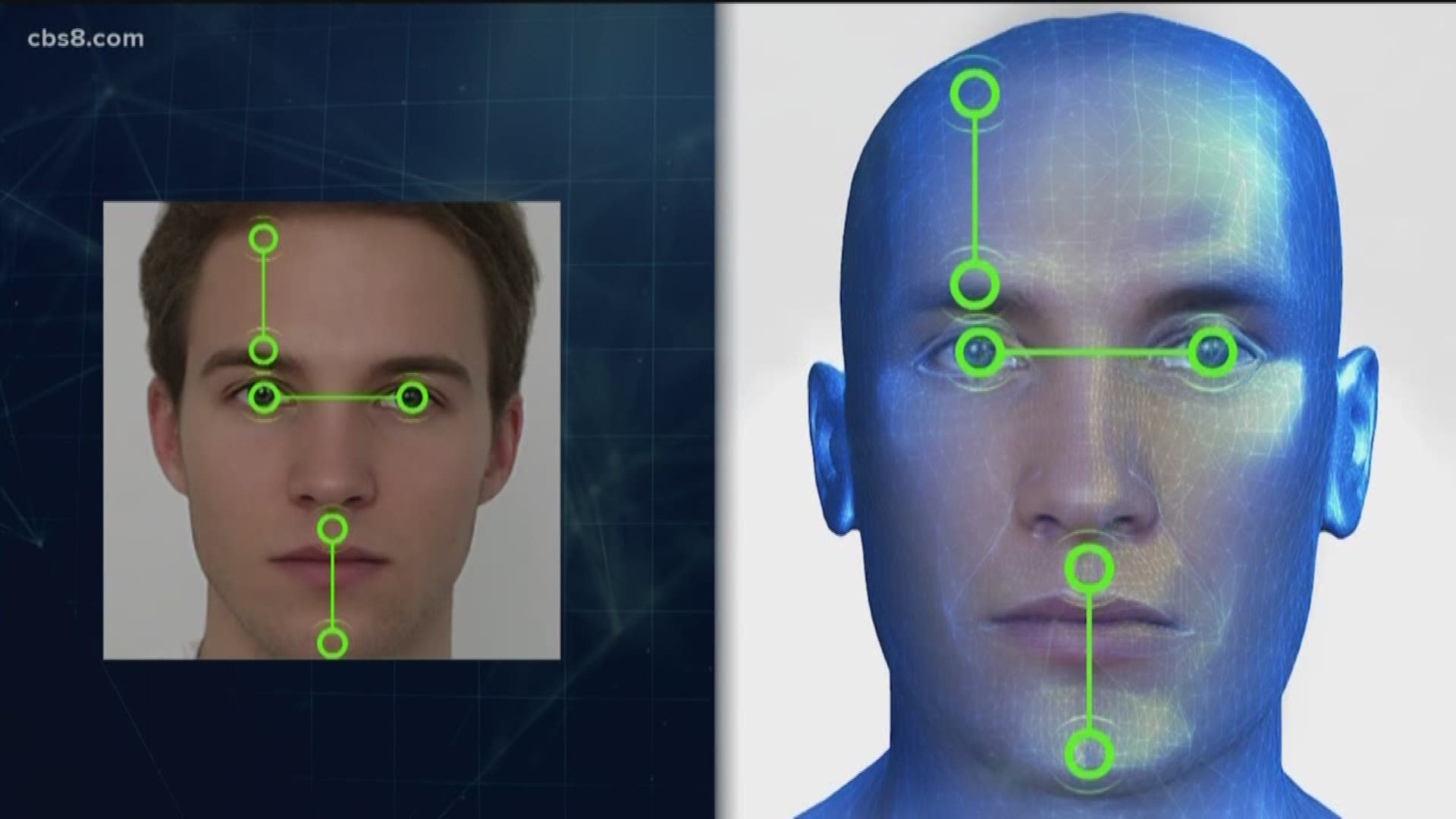SAN DIEGO — The once-futuristic technology of facial recognition is quickly becoming a part of everyday life, from accessing your cell phone to boarding your flight. Here in San Diego County, facial recognition has been a cutting-edge tool used by law enforcement since 2013.
"With technology like this, the options are endless," said Agent Natalie Caceres of the Chula Vista Police Department.
CVPD has been a leader in deploying this evolving technology: each one of its sworn officers are issued mobile devices equipped with facial recognition software, more than any other law enforcement agency in the county.
"With this technology we can identify someone in the field and if they don't need to come to the station to be identified. We can ID them in the field and then release them from there," Caceres said.
Here's how it works: using an app on the smartphone or tablet, an officer first takes a picture of the subject. That encrypted image is then transmitted to a centralized network called ARJIS, or the Automated Regional Justice Information System, where it is compared against the San Diego Sheriff Department's database of 1.4 million mugshots. In a matter of seconds, a series of potential matches are then sent back to the officer's mobile device.
Caceres said that Chula Vista police officers use the technology on a daily basis, providing police with a powerful tool that saves time and promotes safety.
"Sometimes the probability can be up to 99.8% that it is that person - sometimes it is lower," she added.
Caceres also said that it is used under strict policy guidelines, helping identify people involved in an investigation or who have been detained and are unable or unwilling to provide proof of their identity.
"It is meant to be less intrusive to the public," she said.
Critics, however, counter that San Diego's face recognition program, which is overseen by SANDAG, is far too intrusive.
"I think that face recognition at this point is too dangerous to be used," said Dave Maass, a senior investigative researcher with the Electronic Frontier Foundation, a civil rights watchdog group that is calling on law enforcement in San Diego County to stop using facial recognition technology.
"It has been this Wild West of facial recognition in San Diego, without a lot of oversight, without a lot of quality control, without a lot of questioning," Maass told News 8.
Earlier this year. Governor Gavin Newsom signed off on a new law that - starting next year - will place a three-year moratorium on all biometric surveillance, like facial recognition, connected to cameras worn or carried by law enforcement officers.
Maass said he believes the time for San Diego to begin enforcing this ban is now.
"This is a system for police to track where you are, to track who you are, to gather information on you, without you necessarily having a way to opt out of it or to say no," Maass said.
The county's program has also included some federal agencies, including Border Patrol and Immigration and Customs Enforcement (ICE).
"In an age when it is very controversial for police to work with ICE, particularly around data, I'm not sure if it is totally above board with what they're doing with ICE," Maass said.
San Diego County's use of facial recognition technology has exploded in the years since it was first adopted, growing from 3,058 scans in 2013 to collectively more than 25,000 scans last year.
"People should be really alarmed that San Diego has somehow quickly moved to the forefront of surveillance without anybody really paying attention to it," Maass said.
However, law enforcement counters that, when deployed properly, this high-tech tool helps keep communities safe.
"We have policies, and we are trying to protect everyone's civil rights," Caceres told News 8. "We're making sure that the public knows this is an advantage for them."

